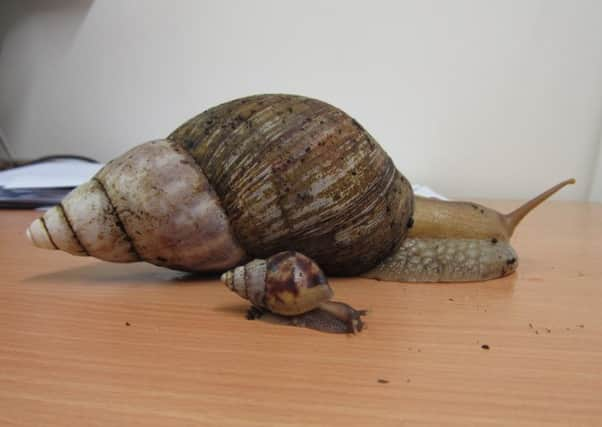Column - View from the Zoo


We currently have 10 adult snails of varying ages and sizes and recently we have had some babies hatch.
Each snail has a slightly different pattern on their shell. Their shell is used to keep their soft, fleshy foot (the name of their main body) safe from predators, to protect their organs, or to prevent their bodies from drying out. The shell is very tough however the snails require a source of calcium in their diet, which they get from a cuttlefish bone, to ensure that it is kept strong and healthy.
Advertisement
Hide AdAdvertisement
Hide AdWhen the babies emerge from their eggs they are born with a shell but it is in a fragile state therefore they require calcium quickly to harden their shell. The shell continues to grow with the snail over the course of its life and sometimes they can get up to 20cm in length.
In the wild these snails would naturally live in East Africa, therefore they require warm temperatures and a fairly high humidity.
Snails are herbivores, meaning that they have a varied diet consisting of fruit, vegetables and leaves. They possess a radula which they use during eating. This is a small spikey structure in their mouth which acts a bit like a cheese grater.
Snails are hermaphrodites meaning any two snails can mate. After mating, the snails would bury into the ground and lay up to 200 eggs.
Advertisement
Hide AdAdvertisement
Hide AdThe eggs and hatchlings are very small meaning that they are vulnerable against predators. Their growth is fairly rapid for the first year and then slows for the remainder of their life. They can live to be 5-10 years old.
Snails are classified as gastropods along with slugs and limpets. They have some organs in the same way in which humans would; a stomach, liver, kidney, heart, lung.
They do not possess veins and arteries but have an open circulatory system instead.
Their eyes are only very simple and are located on the top of two long tentacles and they are unable to hear.